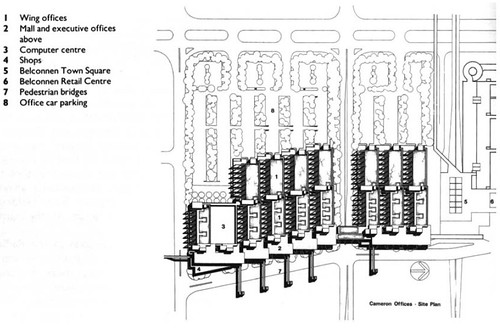 |
Generic City C8 - performance night, photographer Mitchell Whitelaw |
 |
| Not such a generic audience... |
 |
| Picnic rug on kerb side? |
Refining after the dry run, I developed a tool to set, remember and edit where windows are, and so was able to make growth avoid windows. This worked very smoothly (although it was a little cumbersome to edit using arrow keys) and was a great visual improvement on the untidiness of the dry run.
Also after the dry run, I slowed the growth rate and increased the range of growth speeds, but perhaps could have gone further - I was trying to balance against speed to show at a glance the dynamic and iterative quality. On the night in response to feedback I did in fact slow it down further. Mitchell described the generated cities as having an elusive quality - just as soon as they were fully grown they disappeared, and because you never knew when they were fully grown and therefore about to disappear, it was impossible to photograph! Mitchell's very nice suggestion was to pause before disappearing and then fade in transition.
This got me thinking about other ways to improve legibility. As each frame many cells can grow and as each cell can have many children or branches, it quickly becomes difficult to follow new growth. Perhaps I could have more tightly controlled growth by keeping track of a cell's age since it last grew and limiting future growth in this way, or by limiting number of children or branching so that growth is more linear - I didnt consider limiting branching previously because I was only thinking about density which I controlled by number of neighbours.
Further it might be interesting to trace pathways through the city or highlight precincts defined for example by blocks serviced by particular streets, blocks adjoining particular public squares or neighborhoods of the same block type. This would assist in reading the structure of the city.
On the performance night it was again abundantly clear that the simplest geometries were the most striking and legible at this scale. Perhaps, against what I wrote previously, this is cause to extend a shape grammar with little variance and highly structured relationships endlessly across the facade. Perhaps a Cameron Offices or other John Andrews skin, or even a skin based on the Nolli Plan of Rome would have been really effective. This is a lesson about misjudgment, a reminder to test often and early.
The most significant difference between Generic City and a potential John Andrews shape grammar is that Generic City has non-deterministic relationships adding an exciting additional layer of complexity - that of allowing emergent orders, simply from interactions between neighbouring cells. Harnessing emergence better simulates organic city growth, accommodating multiple competing forces, and so makes for the beginnings of a potentially powerful analytical or design tool.
One final loose end, I previously suggested making Generic City interactive. I never pursued this because I judged that apart from conditions that changed the speed of growth or events that terminated a city and began a new one it would be difficult to make the interactivity legible - what condition could legibly control block type for instance? Further any interaction would potentially clash with internal growth imperatives, making the underlying system more difficult to read.
This project is principally concerned with exploring a generative system and grounding it by the interpretive content: tectonic dressing of structure, articulating surface and fenestration; generative system as emphasis of the architecture as system; networked city precinct to reveal the seeds for a greater whole contained within a single building; an iterative production to imply the conflation of past, future and alternate realities. It is critical that the system is legible.
 |
Generic City C8 - performance night, photographer Mitchell Whitelaw |
 |
| Generic City C8 - performance night, photographer Mitchell Whitelaw |
 |
| Generic City C8 - performance night, photographer Mitchell Whitelaw |
 |
| Generic City C8 - performance night, photographer Mitchell Whitelaw |
 |
| Generic City C8 - performance night, photographer Mitchell Whitelaw |








































